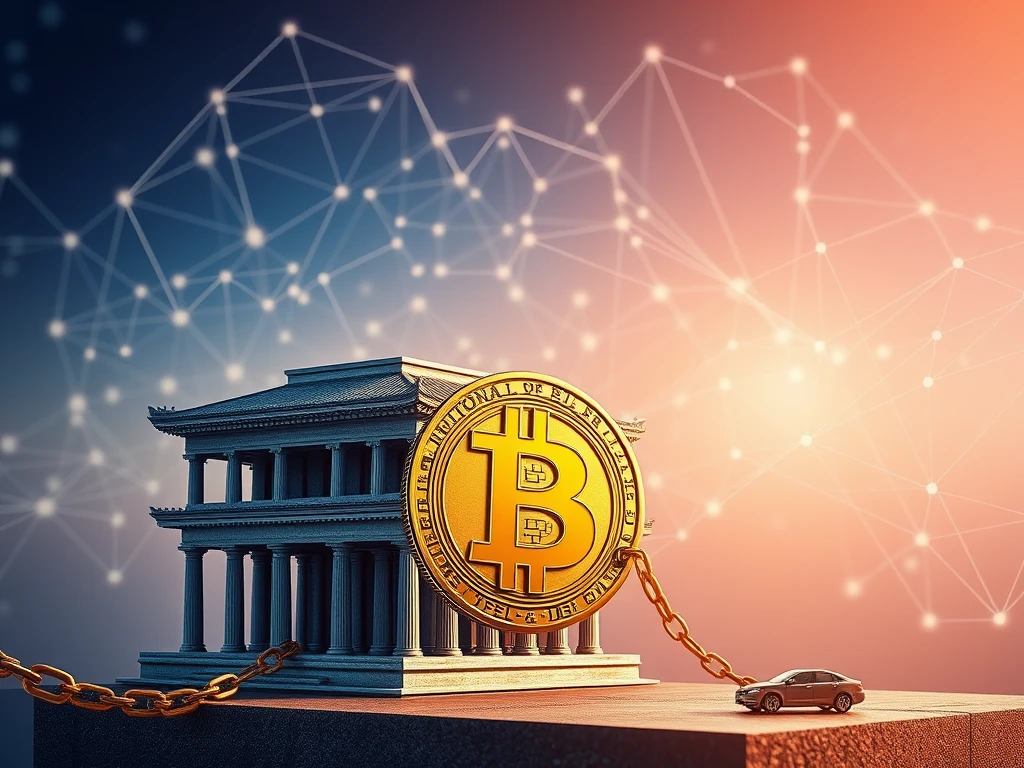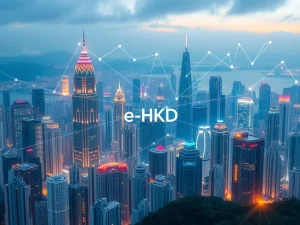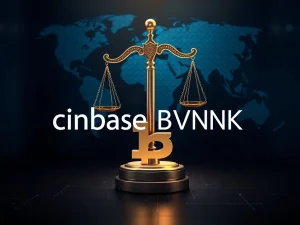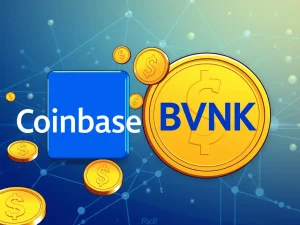Exposing the Dark Side: Centralization Risks in Asset Tokenization Revolution

Real-world asset (RWA) tokenization is gaining momentum, touted as the next big wave in crypto. But is it all sunshine and rainbows? Tracy Jin, COO of MEXC exchange, throws a dose of reality into the mix, warning about the lurking centralization risks within this burgeoning sector. Let’s dive deep into her concerns and understand the potential pitfalls of asset tokenization.
Decoding RWA Tokenization: What’s the Hype?
Before we delve into the ‘dark side,’ let’s quickly recap what RWA tokenization is all about. Essentially, it’s the process of representing real-world assets—think real estate, stocks, bonds, commodities—as digital tokens on a blockchain. This innovative approach promises to unlock numerous benefits, including:
- Increased Liquidity: Fractional ownership becomes easier, making it simpler to buy and sell parts of traditionally illiquid assets.
- Enhanced Accessibility: Opens investment opportunities to a wider range of investors, regardless of geographical location or financial status.
- Greater Efficiency: Streamlines processes, reduces intermediaries, and potentially lowers transaction costs.
- Transparency and Traceability: Blockchain technology provides a clear and immutable record of ownership and transactions.
With these advantages, it’s no surprise that the RWA tokenization market is projected to explode. Currently, excluding stablecoins, we’re looking at nearly $20 billion in tokenized assets on-chain. Forecasts vary wildly, but some institutions predict a staggering growth to between $4 trillion and $30 trillion by 2030. Stablecoins, already a significant part of the tokenized assets landscape, boast a market cap exceeding $227 billion, with private credit following at over $12 billion. The potential is undeniably massive.
The Shadow of Centralization: Unveiling the Risks
However, Tracy Jin raises a crucial point: the specter of centralization. She argues that if asset tokenization remains tethered to centralized intermediaries and regulatory bodies, it risks becoming just a ‘new version of old financial infrastructure,’ not the revolutionary financial paradigm shift many envision. According to Jin, the key centralization risks to watch out for are:
- Censorship: Centralized entities controlling token issuance and platforms can impose restrictions or block transactions based on arbitrary decisions or external pressures.
- Liquidity Issues: If tokenized assets are primarily traded on permissioned or centralized exchanges, liquidity could be hampered, defeating one of the core benefits of tokenization.
- Legal Uncertainty: The legal framework surrounding tokenized assets is still evolving. Reliance on national legal systems, especially in jurisdictions with unstable environments, introduces risks.
- Cybersecurity Problems: Centralized platforms are often bigger targets for cyberattacks. A successful breach could compromise vast amounts of tokenized assets.
- Asset Confiscation: Perhaps the most concerning risk is the potential for state or third-party intermediaries to confiscate tokenized assets. This is particularly relevant for assets tied to jurisdictions with political instability or weak rule of law.
Permissioned Blockchains and Regulatory Overreach: A Double-Edged Sword?
Jin highlights that the majority of tokenized assets are likely to be issued on permissioned or semi-centralized blockchains. While permissioned blockchains can offer benefits in terms of compliance and control, they inherently concentrate power. This concentration can be a double-edged sword.
Consider real-world assets like real estate or bonds. Tokenizing these assets doesn’t magically detach them from the national legal system. If the underlying property or company is located in a country with political volatility or legal instability, the risk of confiscation of the tokenized assets actually increases. The token simply becomes another layer of abstraction, potentially adding complexity without removing the fundamental jurisdictional risks.
Real-World Assets: Revolution or Just Evolution?
The dream of asset tokenization is a truly global and decentralized financial system. However, Jin’s perspective forces us to confront a critical question: Is asset tokenization, in its current trajectory, truly revolutionary, or is it merely an evolutionary step within the existing centralized financial framework?
If the infrastructure for tokenized assets remains largely centralized and subject to traditional regulatory pressures, the transformative potential could be significantly limited. Instead of a decentralized revolution, we might end up with a more technologically advanced but still fundamentally centralized system.
Navigating the Future of Asset Tokenization: A Call for Decentralization
Tracy Jin’s insights serve as a vital reminder: the technology itself is not a silver bullet. To truly unlock the revolutionary potential of asset tokenization, a conscious effort towards decentralization is crucial. This means exploring and prioritizing:
- Decentralized Infrastructure: Building robust decentralized platforms for issuance, trading, and custody of tokenized assets.
- Stronger Legal Frameworks: Developing international and decentralized legal frameworks that protect token holders’ rights without relying solely on potentially unstable national systems.
- Focus on Security and Transparency: Prioritizing robust cybersecurity measures and ensuring transparency in the operations of tokenized asset platforms.
The path of asset tokenization is still being forged. By acknowledging and addressing the centralization risks highlighted by experts like Tracy Jin, we can steer the industry towards a future where the promise of decentralization is truly realized, and tokenized assets empower individuals globally.







